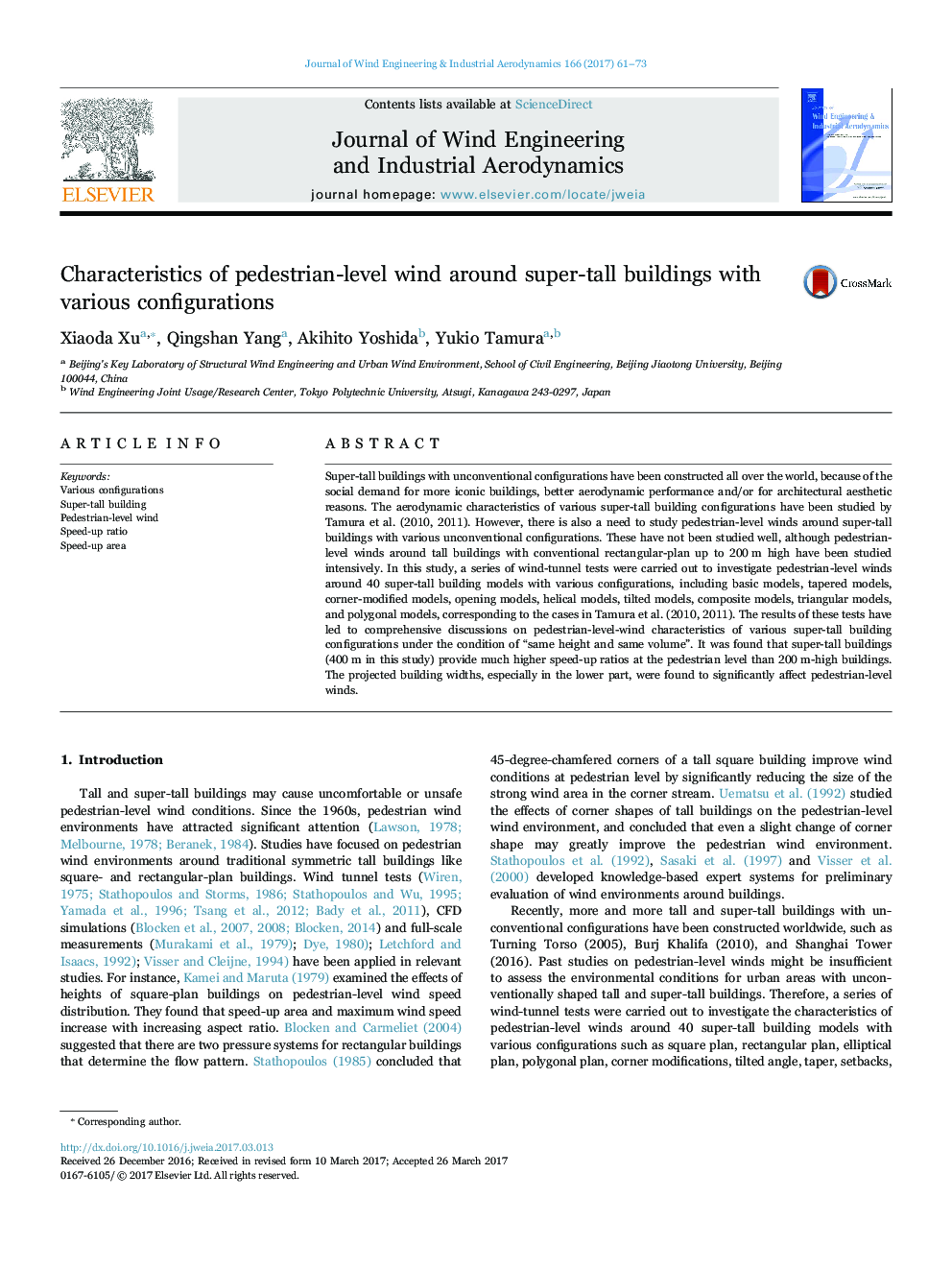| Article ID | Journal | Published Year | Pages | File Type |
|---|---|---|---|---|
| 4924775 | Journal of Wind Engineering and Industrial Aerodynamics | 2017 | 13 Pages |
Abstract
Super-tall buildings with unconventional configurations have been constructed all over the world, because of the social demand for more iconic buildings, better aerodynamic performance and/or for architectural aesthetic reasons. The aerodynamic characteristics of various super-tall building configurations have been studied by Tamura et al. (2010, 2011). However, there is also a need to study pedestrian-level winds around super-tall buildings with various unconventional configurations. These have not been studied well, although pedestrian-level winds around tall buildings with conventional rectangular-plan up to 200Â m high have been studied intensively. In this study, a series of wind-tunnel tests were carried out to investigate pedestrian-level winds around 40 super-tall building models with various configurations, including basic models, tapered models, corner-modified models, opening models, helical models, tilted models, composite models, triangular models, and polygonal models, corresponding to the cases in Tamura et al. (2010, 2011). The results of these tests have led to comprehensive discussions on pedestrian-level-wind characteristics of various super-tall building configurations under the condition of “same height and same volume”. It was found that super-tall buildings (400Â m in this study) provide much higher speed-up ratios at the pedestrian level than 200Â m-high buildings. The projected building widths, especially in the lower part, were found to significantly affect pedestrian-level winds.
Keywords
Related Topics
Physical Sciences and Engineering
Energy
Renewable Energy, Sustainability and the Environment
Authors
Xiaoda Xu, Qingshan Yang, Akihito Yoshida, Yukio Tamura,
